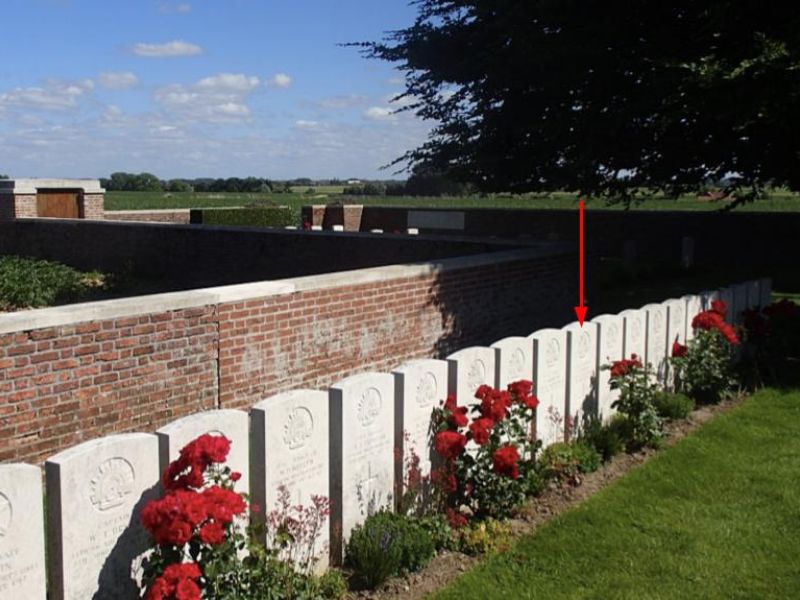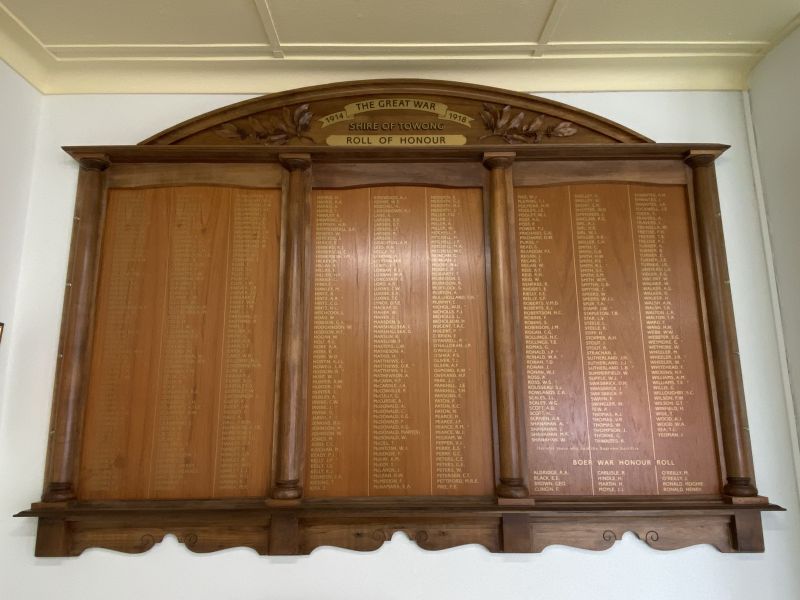Horace Derrick
Horace was born in 1890, the youngest child of John Henry and Jane (née Sinclair) of Tallangatta, Victoria. Horace had three older siblings, Alice, Harry and Alfred. When Horace was only two years-old his mother died. John then became responsible for looking after four children under the age of eight. Around 1905, John took his four children to live in Huntly, near Bendigo. In 1908, when Horace was only 18, his father passed away. The 1914 Electoral Roll for the subdivision of Northcote shows Horace living at 26 Urquhart St in Northcote. His profession was listed as “clerk”.
On the 18th of February 1916, Horace enlisted in the 1st AIF at Melbourne. He was allocated the Regimental Number 1625 and placed into the 1st Reinforcements for the 37th Battalion. With both of his parents deceased, Horace gave his next of kin as a friend, Miss Sophie Hart of 236 Richardson Street, Middle Park, Victoria.
The 1st Reinforcements for the 37th Battalion embarked on HMAT A11 Ascanius on the 27th of May 1916 at the Port of Melbourne. Also onboard were ten other men from the Upper Murray. A little over seven weeks later they disembarked at Plymouth in the south of England. After further training at Salisbury Plain, he was transferred to B Company of the 37th Battalion. In early September he was admitted to hospital suffering from the mumps. It would be late November of 1916 before Horace travelled over the English Channel from Southampton and joined his unit in France.
Within a week of the battalion arriving in France it had begun to occupy trenches on the Western Front. There would be no occupying “nursery sectors” for the 37th, so called because they gave battalions time to get themselves used to the conditions at the front. The battalion was also in time for the onset of one of the worst winters in living memory to strike Europe. During this time the battalion, along with the rest of the 3rd Division, was heavily involved in raiding German trenches. In February 1917, the 37th Battalion provided 400 troops, and along with a similiar number from the 38th Battalion, formed a special raiding battalion. It’s not known if Horace was a member of this battalion. After several weeks of training this force conducted a single 35-minute raid on the night of the 27th of February and was then disbanded.
The first major battle fought by the 37th Battalion was that of the Wytschaete - Messines Ridge, which has been covered in John Stamp, Albert Mildren and William Bradney’s stories. Overall, this battle over three days, would claim the lives of at least five men from the Upper Murray.
Private G Haydon (731) of 8 Platoon, B Company of the 37th Battalion wrote a witness account of what happened to Horace.
“I knew him. He was dark, about 20 years of age, and was a Lewis gunner (a light machine gun). He came over in the 1st Reinforcements. His name was Horace. I heard it read out in Battalion Orders some time ago that his body and been found between supports and the front line by the Royal Engineers when they were digging a communication trench near Scholtze’s Farm, Messines, and also that he was buried. I did not hear where his grave is.”
Chaplain Davidson of the 37th Battalion, also provided insight on Horace’s fate.
“Killed in Battle of Messines 8.6.17. Buried at U.3. d.6.9. Sheet Belgium and France 28. S.W.
In regard to the battle of Messines - we can only approximately give date of death as 7 to 10th June - Most of them on 8th or 9th. Our boys went “over the top” in the morning of the 7th. They were pushing on bit by bit each day till relieved in the early morning hours of the 10th. There was so much to do in clearing up things after the fight that it was not possible to go round and get exact particulars of the day when each man fell. They went - they came back, what was left of them, and when we entered up the lists and filled in the blanks - killed, missing or wounded - it was all we could do.
In regards to the burials - Parties went out as soon as possible. The ground was ultimately completely gone over. We know the Hun could take no prisoners, yet we gathered quite a number. But those of us who saw the ground, know how it was. Shell after shell ploughed up every square yard of the ground, and many bodies were buried by the shells that filled up holes where bodies had fallen.”
Horace’s body was eventually discovered and interred in the Bethleem Farm East Cemetery, Belgium in Plot A10. He is also remembered on the Australian War Memorial Roll of Honour and the Towong Shire Roll of Honour in Tallangatta, Victoria. For his service, he was awarded the British War Medal and the Victory Medal.
Horace’s older brother, Harry, was also a member of the 37th Battalion. He was taken as a prisoner of war in August of 1918. He died whilst still n thePOW camp the day after the Armistice was declared.

 Stephen Learmonth
Stephen Learmonth